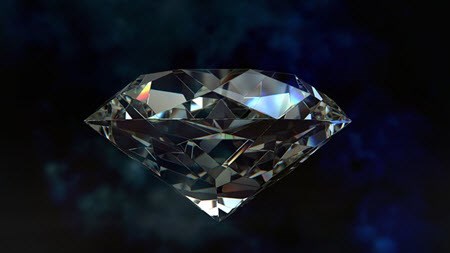Intro to Gems: What’s a diamond?
Most of us think of elegance, rarity, prestige and beauty when thinking of a diamond – but very few of us know what a diamond really is. Here’s a basic rundown of what’s in a diamond – literally speaking.

A diamond is essentially a crystal made up of strongly bonded carbon atoms arranged in a crystal structure called a diamond lattice – a cubic pattern of 8 atoms.
Diamonds are formed deep within the Earth, at depths of 140 to 190 kilometers in the earth mantle, and grow over periods ranging from 1 billion to 3.3 billion years. Quite understandably, the diamond crystals experience immense degrees of heat, pressure, merge with other elements and even other diamond crystals during their growth. The formation of color diamonds stem from defects or which can color diamond blue (boron), yellow (nitrogen), brown (lattice defects), green (radiation exposure), purple, pink, orange or red.
Diamonds are brought close to the Earth's surface by magma through volcanic eruptions, which then cools into igneous rocks known as kimberlites and lamproites. Once it emerges from the earth, the form and characteristics of the crystal determine the shape, color and clarity the polished gem will have.
Thanks to its unique composition and characteristics, the diamond is the hardest material on Earth, rating a perfect 10 on the Mohs scale of hardness - several times harder than the next-hardest substance, corundum. You may know corundum as ruby and sapphire.

